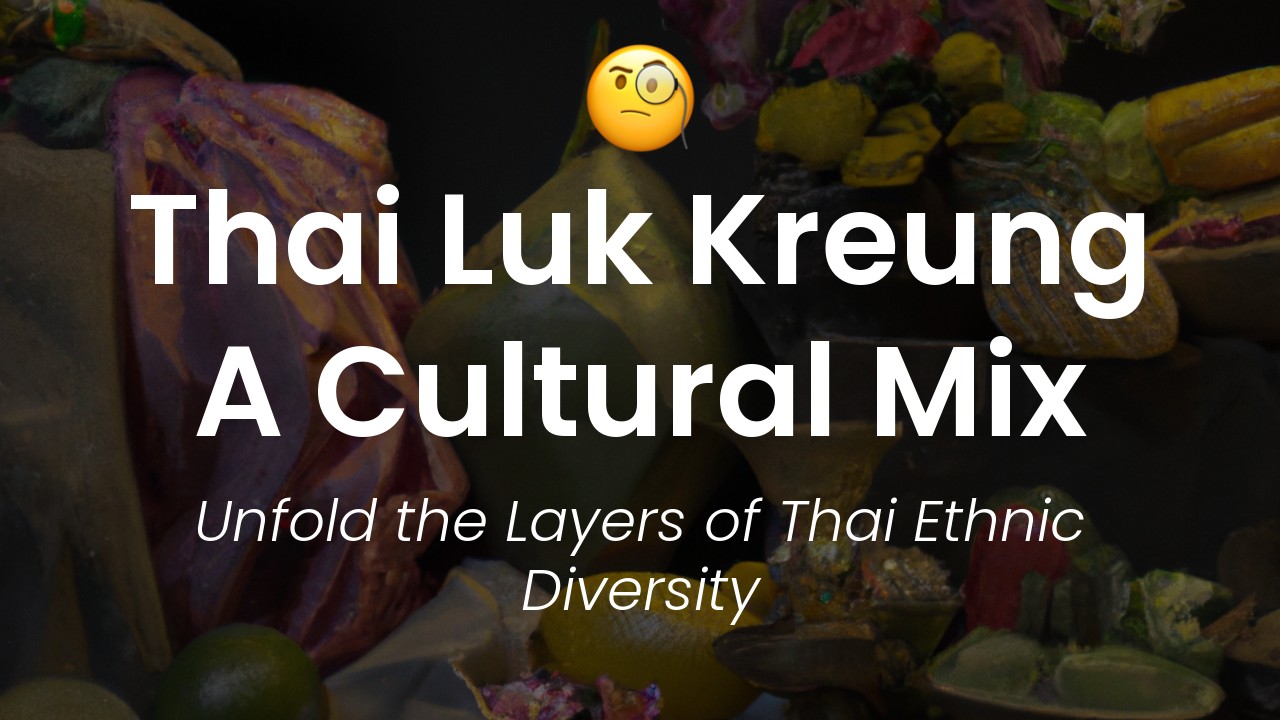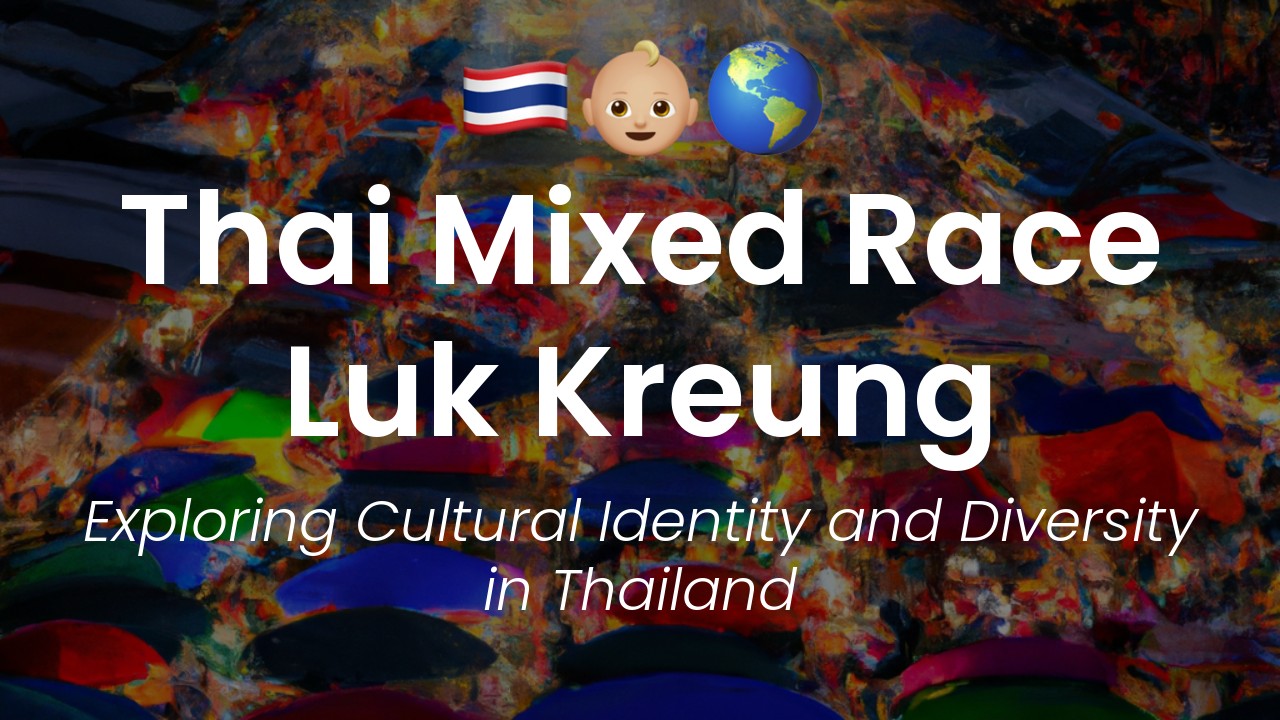As a Thai woman, I take great pride in the multicultural heritage of my country. Thailand's extensive history, rich traditions, and diverse population have resulted in a fascinating mix of cultures that have shaped the nation into what it is today. However, one of the most enigmatic groups in this distinctive landscape of Thailand is the Luk Kreung, which translates to "half-breed" or "mixed-blood."
The Luk Kreung are the children of Thai and non-Thai parentage, who possess a unique blend of both cultures. They have been a part of Thai society for centuries, but their stories were not always fully acknowledged or understood. This group has been a subject of fascination and curiosity, both locally and internationally, for many years. Despite their mystery and novelty, they have been subject to unspoken prejudices and social stigmas that have unjustly affected their opportunities and prospects.
In my blog article, I will take you through the history and culture of the Luk Kreung, exploring what makes this group so unique, and why they are so fascinating. I hope to demystify their culture and show how their legacy has left a distinct impression on modern-day Thailand. Through my storytelling, I invite you to join me in discovering the fascinating world of the Luk Kreung and learn more about this intriguing chapter in Thailand's history.
Who are the Luk Kreung?
Have you ever heard the term "Luk Kreung" before? For those who are unfamiliar, the Luk Kreung are individuals in Thailand who are of mixed race. They often have one Thai parent and one parent of a different nationality, such as Chinese, Indian or European.
The term "Luk Kreung" has its origins in the Thai language, where "luk" translates to "child" and "kreung" translates to "half". However, despite being labelled as "half", the Luk Kreung are considered to be whole individuals who embody a blend of different cultural backgrounds.
History of multiculturalism in Thailand
Thailand has a long history of cultural diversity, with influences from neighbouring countries, such as China and India, as well as European colonisation. However, it wasn't until the 20th century that the term "Luk Kreung" became more widely used in Thailand.
During this time, there was a growing fascination with bi-racial individuals, who were seen as exotic and unique. This led to a rise in media portrayals of the Luk Kreung as glamorous figures, often used for advertising and entertainment purposes.
Blending of Thai and other cultures
The Luk Kreung community in Thailand is incredibly diverse and has contributed to a unique blend of cultures in the country. This can be seen in various aspects of Thai society, from fashion to food, music to art.
One example is the famous Thai dish, Massaman curry, which is believed to have originated from the Muslim community in southern Thailand. Another example is the traditional Thai dance, the Khon, which incorporates elements of both Indian and Thai dance styles.
Popular Luk Kreung figures in Thailand
Over the years, a number of high-profile Luk Kreung individuals have become well-known in Thailand, including actors, singers and models. Some of the most popular Luk Kreung celebrities include:
- Davika Hoorne, a popular actress with Thai-Belgian heritage
- Louis Scott, a singer and actor with Thai-English heritage
- Yaya Urassaya Sperbund, an actress and model with Thai-Norwegian heritage
These individuals have not only gained fame for their talents and achievements but have also become important symbols of Thailand's multicultural heritage.
Challenges faced by the Luk Kreung community
While the Luk Kreung community has certainly contributed to Thailand's cultural diversity, they have also faced their fair share of challenges.
One of the main issues is discrimination and prejudice, with some individuals in Thai society viewing the Luk Kreung as inferior or not "truly" Thai. This can lead to a sense of identity crisis for Luk Kreung individuals who may struggle with feeling accepted by both Thai and non-Thai communities.
Another challenge is the pressure to conform to certain beauty standards, which can be particularly difficult for Luk Kreung individuals who may not fit into traditional Thai ideals of beauty.
Embracing diversity in modern Thailand
Despite the challenges faced by the Luk Kreung community, there is a growing acceptance of diversity in modern Thailand. This can be seen in various initiatives aimed at celebrating multiculturalism and promoting inclusion, such as:
- The annual Bangkok International Festival of Dance and Music, which showcases a variety of cultural performances from around the world.
- The Miss Universe Thailand pageant, which has recently been open to Luk Kreung contestants, reflecting a move towards greater inclusivity in Thai beauty standards.
- The rise of Thai fashion designers who incorporate traditional designs from different cultures into their work, such as "Chang Siam" who creates fashion items that meld traditional Thai and Japanese aesthetics.
These initiatives demonstrate a growing appreciation for the Luk Kreung and other multicultural influences in Thailand, and a recognition that diversity is something to be celebrated.


